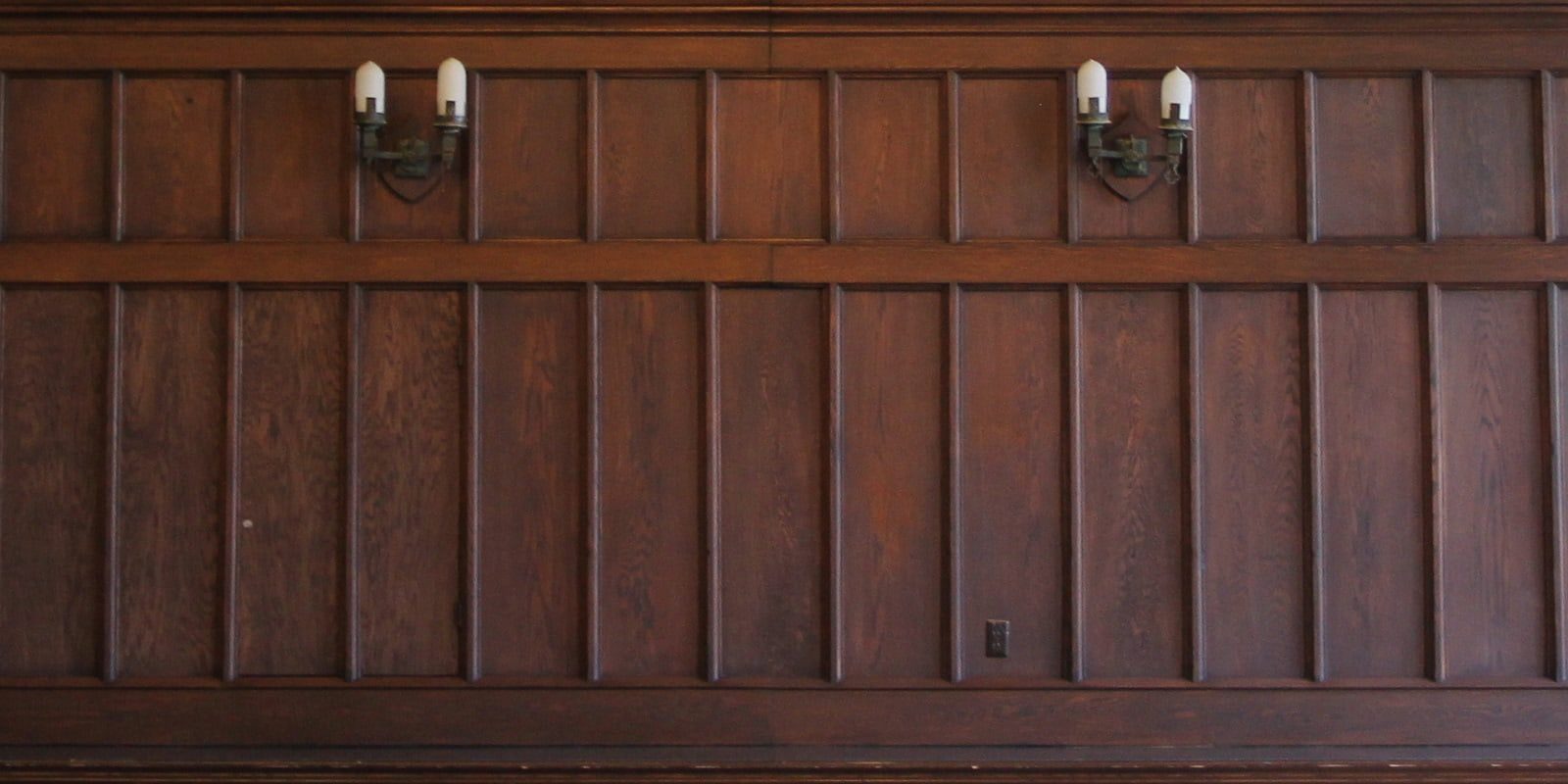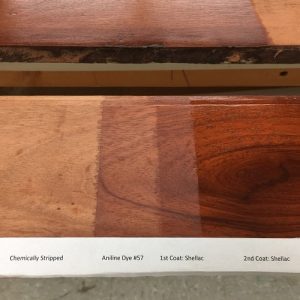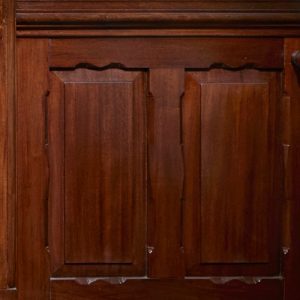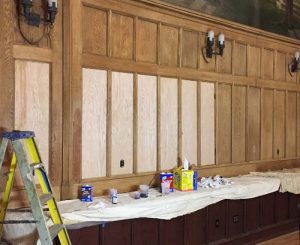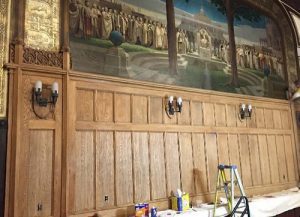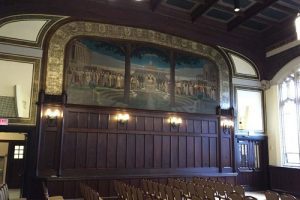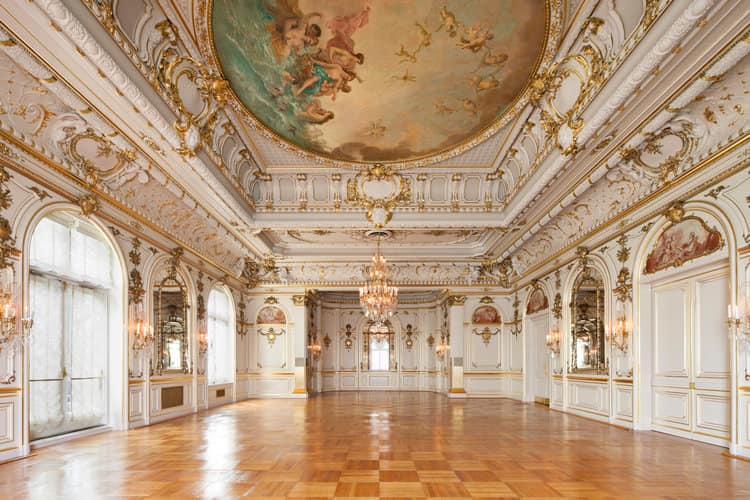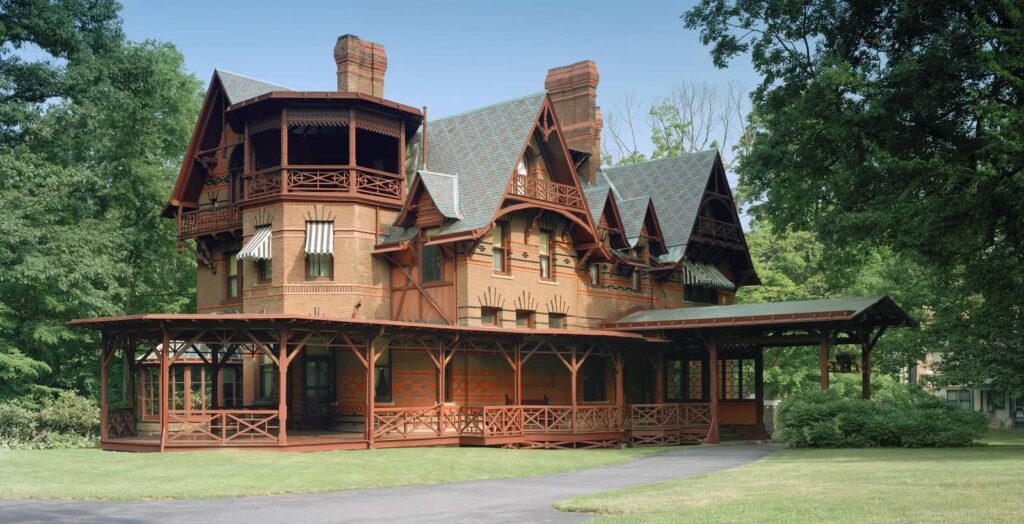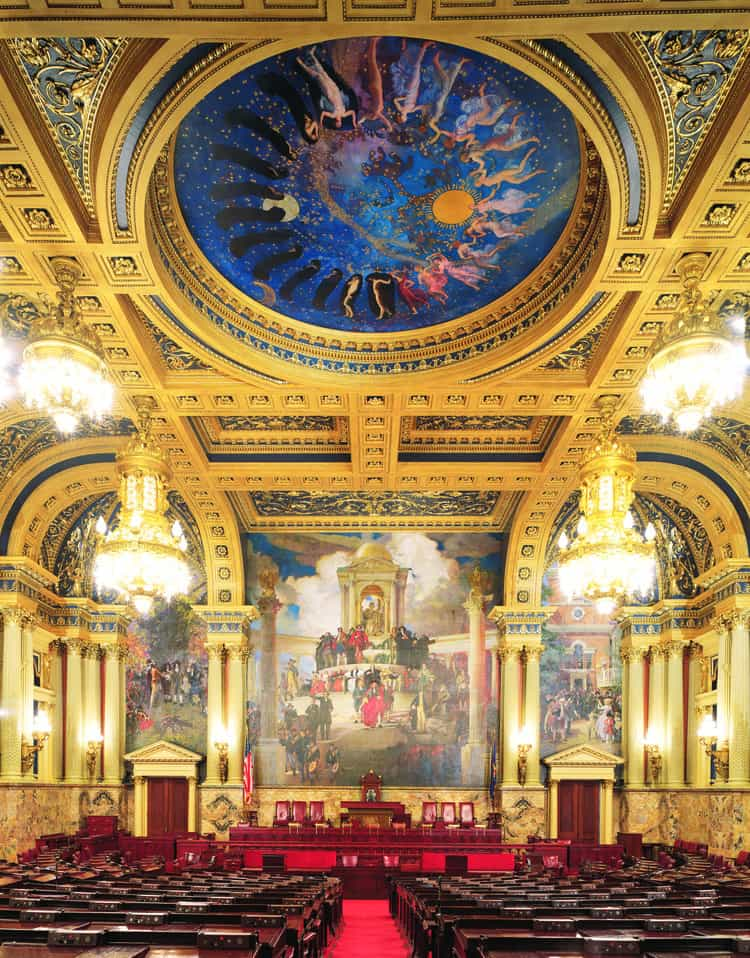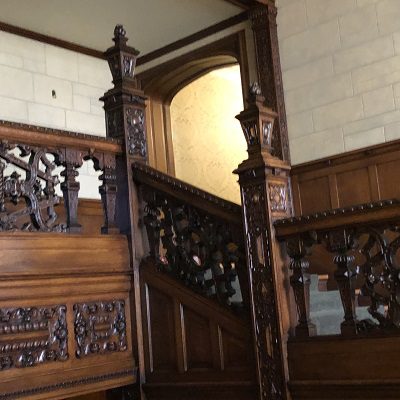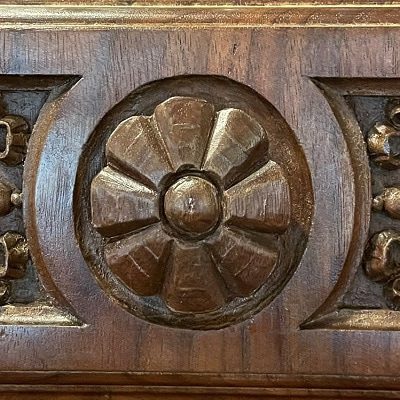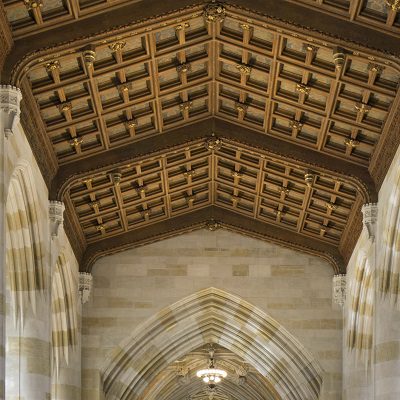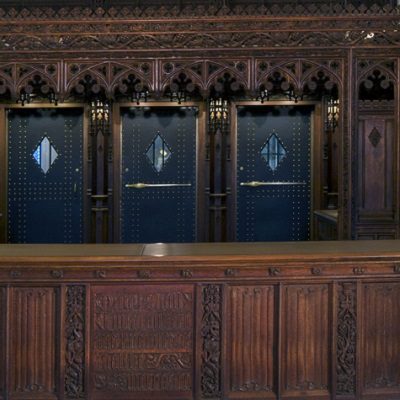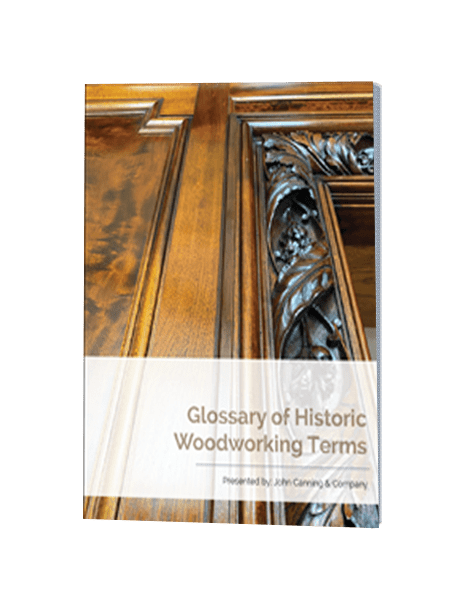Wood finish has been used for hundreds of years for both protective and decorative purposes. Different types of finish are used for different projects depending on the desired aesthetic of the wood as well as its intended purpose– whether that of a chair, floor, ceiling, or decorative molding.
Wood Finish in Restoration
In the world of restoration, a variety of wood varnish is used every day to revive floors, doors, windows, and decorative elements to their former glory. John Canning & Co. has performed wood restoration on a number of different projects including the Cosmos Club in Washington D.C., the Mark Twain House in Hartford, CT, the Pennsylvania State Capitol, the Sterling Memorial Library at Yale University, and Gasson Hall at Boston College.
Two Categories of Wood Finish: Penetrating and Surface
The wood finishes used today are effectively the same as those used in the 1700s or even earlier. All wood finish may be considered under two categories: penetrating finishes and surface finishes.
Penetrating Finishes
Penetrating finishes seep deep into the wood to give it a very natural look, maintaining the grain and character of the wood very prominently. This finish is typically applied in multiple applications to build up the overall coating thickness. Rubbing Oil finishes are an example of a penetrating finish. Oil finishes are most commonly used on wooden floors due to the natural, rustic look they provide. They are also commonly used on furniture and wooden utensils being food-safe and non-toxic. Oil finishes have been in use for hundreds of years, the most popular of which is Tung Oil which dates back to ancient China and is obtained from the seed of the Tung tree.
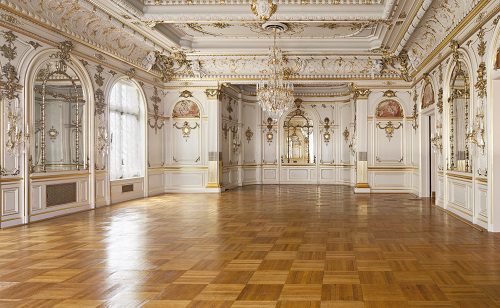
Cosmo Club Ballroom floor restored.
The intention for the Cosmos Club Ballroom floor was to preserve as much of the floor as possible, repair any damage, and restore with a finish which would provide protection, easy maintenance, and an appearance which would suitably replicate that of the original. This task was fulfilled using Waterlox Interior Tung Oil in high gloss sheen to replicate the sheen in historic photographs.
Surface Finishes
The rest of the popular finishes– shellac, wax, copal, polyurethane, and varnish– stay more or less on the surface of the wood.
Shellac
Shellac is made from resin produced by the lac bug, native to India. It became popular in the United States in the early 1800s when it began being imported from India. It is more often used for decorative purposes than protective purposes as it is neither water nor chemical proof and will wear easily. It is thinned with denatured alcohol and dries rather quickly. One of the benefits to shellac is that the hardened finish can be revived by applying denatured alcohol over the surface, allowing it to be rejuvenated.
(Left) Woodwork before restoration. (Middle) Woodwork process used. (Right) Woodwork after restoration.
John Canning & Co. restored the Mahogany Suite in The Mark Twain House, a National Historic Landmark. The decorative woodwork lining the walls, doors, and furniture was stripped and re-finished using a certain dye and Mohawk Shellac Flakes to match the original 1874 design.
Wax
Wax was very popular from the mid 1700-1800. While almost any type of wax can be used as a protective layer similar to varnish, the early New Englanders used beeswax due to its surplus in the colonies. Although not as durable as other varnishes, it is adaptable to any type of wood. It is most commonly used for floors and furniture, giving a more reflective quality than oil finish. There are two important benefits to wax coatings: reversibility and control of sheen. Wax can be removed with a rag and paint thinner rather easily. And, the sheen can range from a low (dull) sheen to a highly reflective polished sheen. This also depends on the amount of buffering done afterwards.
Polyurethane
Polyurethane is a chemical formula resembling liquid plastic originally produced by Dr. Otto Bayer (1902-1982) at the start of World War II. It was used to protect masonry, wood, and metals such as war machines and airplanes. It serves extremely protective due to its durability and water resistance. Today, it is used in almost everything we touch-chairs, tables, cars, clothes, appliances, and even wall insulation. As a wood finish, it is most frequently used for cabinets, doors, furniture and floors. When considering polyurethanes, there are two things that should be understood: it is a hard/brittle finish that may flake off surfaces over time, and the varnish film will eventually amber in color.
Varnish
Varnish is a combination of surface and penetrating finishes being composed of oils, resin, and solvents. The history of varnish is in line with the history of arts and industry as it provides a suitable protective coating on any artifact. Additionally, it offers UV protection which is perfect for outdoor furniture and decking. Samples were gathered along the south wall of the PA State Capitol to determine the stain and varnish originally used. After the old varnish was stripped, a water-based aniline dye stain was applied followed with Pittsburgth Rez-Varnish, in a satin sheen was used to match the sample. Repairs were done on the north, east, and south walls as well as the floor on the south side and the caps to each pilaster.
(Left) Replacement panels lighter than existing stripped woodwork. (Middle) Panels were toned to match existing prior to final stain and varnish applications. (Right) Completed wood paneling with finish stain and varnish.
A certain wood paneling surrounding a mural at Gasson Hall was in need of restoration as its varnish covered oak grain wood was not in line with its original 1913 design nor did it match the conserved mural above it. This varnish was stripped and stained with General Finishes Gel Stains followed by two applications of Minwax Polycrylic Satin Varnish. This offered a deep Mahogany color much more suited to the structure’s aesthetical needs.

